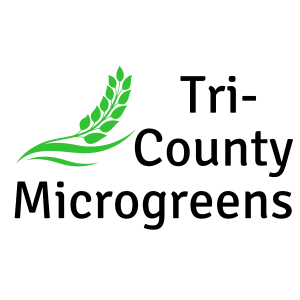What are microgreens, anyway?
We hear this question quite often!
Microgreens are the earliest stage of a vegetable plant’s development, after the sprouting stage.
They are known for their intense flavors, vibrant colors, and high nutritional value. Microgreens are “living food” – purposefully harvested in their most nutritious and flavorful state.
In this photo you can see sprouts on the left, microgreens in the middle, and a more mature vegetable plant on the right.

Proven by Research To Contribute Tons of Potential Health Benefits…
- Boosts your immune system
- Lowers inflammation
- Can help contribute to weight loss
- Can help reduce the risk of various chronic diseases
- Improves gut health
- And much more!
Why are Microgreens Healthier Than Regular Greens Like Lettuce, Spinach & Kale...
- Their nutrient content is much more concentrated
- Their vitamin and antioxidants levels are up to 40X higher than more mature greens
- They’re richer in macro minerals such as calcium, magnesium, phosphorus and potassium
- They’re richer in micro minerals such as iron, zinc and copper
- Some varieties are 200 times richer in sulforaphane than their mature counterparts
- And the list goes on... they’re richer in B vitamins, essential amino acids, folate, etc., etc.
One of the things we love most (other than the countless health benefits) is…
They’re so easy to use!

While the USDA recommends a person eat 2-3 cups of vegetables each day, some holistic physicians recommend double those amounts. Microgreens are a perfect addition to iceberg lettuce (or its replacement), which contains little nutritional value. Almost every day in our home, we use microgreens or shoots as a base for a spring mix or romaine lettuce salad.
Not only are they nutritious, but microgreens are delicious as well—they can revive your appreciation for salads! And they are a beautiful garnish, adding a decorative touch to a main dish.
So, that about covers it, the answer to the question, "What are microgreens, anyway?" If you want to further explore the technical aspects check out some of the references below, or click here to explore the article, “25 Common Uses for Microgreens.”
